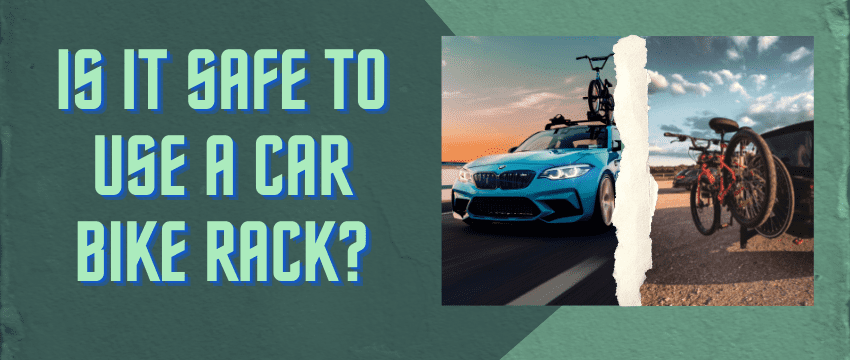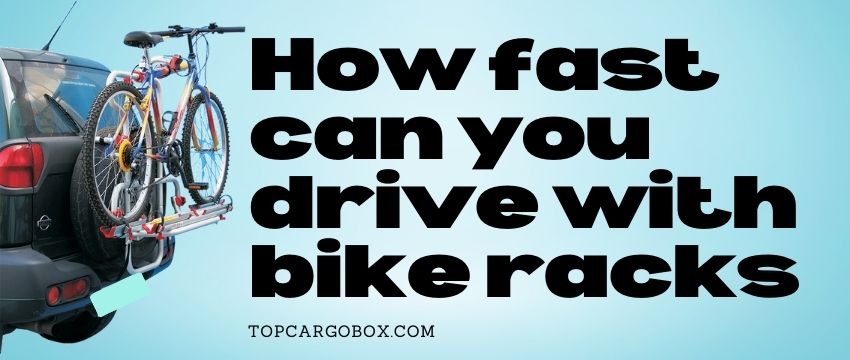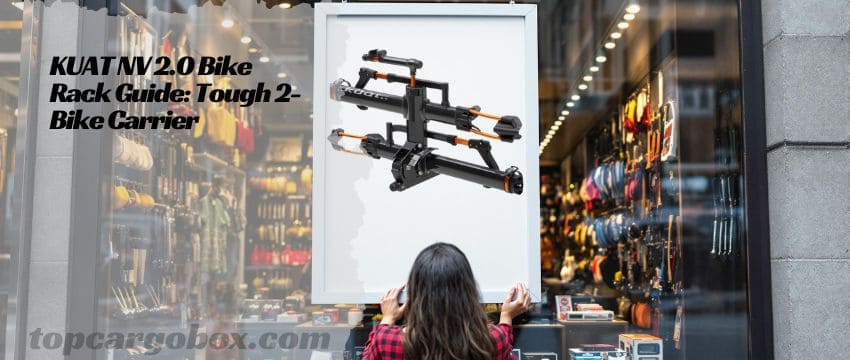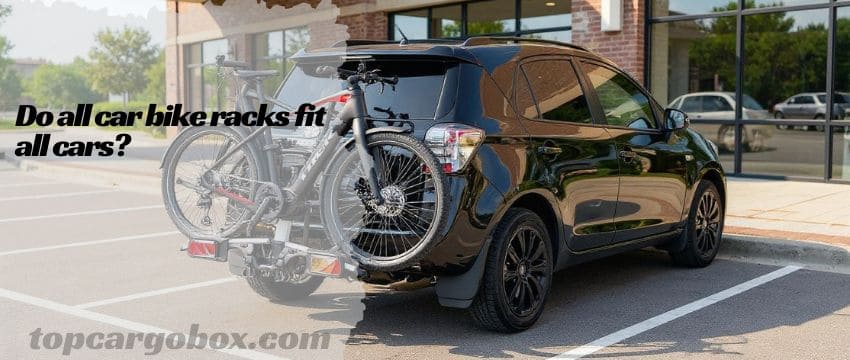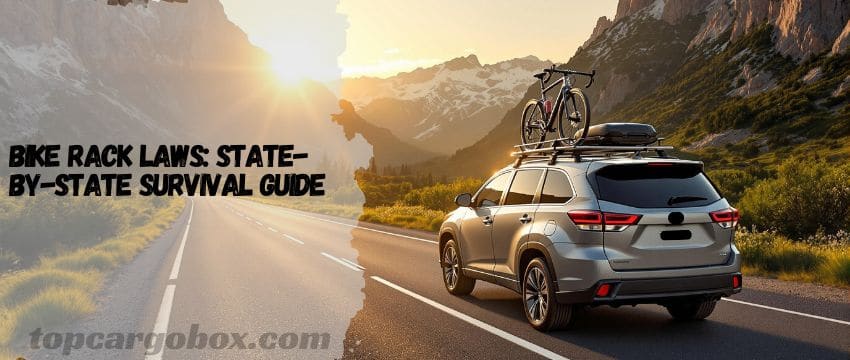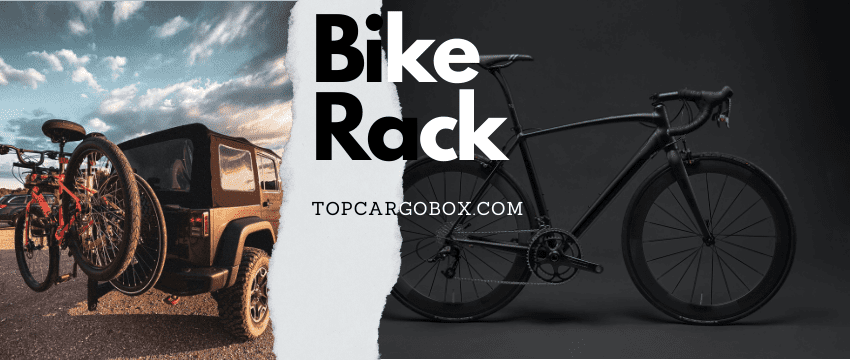If you often use bike racks to transport bikes between places, you may need to pay attention to these tips and safely operate bike racks like a pro. These tips are for people who use bike racks to carry their bikes. You also can take these points as a suggestion when using rooftop cargo carriers like car roof boxes and baskets.
We believe bike racks are the most convenient way to deliver bikes on the roads. Most manufacturers utilize high-density and sturdy materials to make these car racks that you can use to load things on top of at the back of your vehicle, not only bike racks but also other carriers. You can find three popular types of bike racks on the markets of different quality and prices. As a result, if you don’t have one in hand, you must learn before buying a bike carrier. We have a post that shows the most popular questions and answers about bike carriers, and you can learn from the words.
Why do people require bike racks in their outdoor life? When you have bike carriers on your car, you can load bikes outside the vehicle without occupying the interior space. However, if you use rooftop bike carriers, the extra height above the car roof can be a real problem while driving your car or loading the bikes. Otherwise, hitch-mounted or trunk-mounted bike carriers are much safer because they don’t create obstacles above the car roof.

We have seen people who forget the bikes above their car roof and then drive their car to somewhere with height limitations and damage their bikes and car. You can learn from their mistakes.
Hitch-mounted bike carriers are the most secure options because they come with an integrated locks system that can prevent your bikes from stealing.
Safety Tips

Loading Capacity
Each bike carrier has its loading limitation, and you should follow the number and not overload a bike rack. If you exceed the loading capacity and overload your bike carrier, it can bring many risks when driving, especially on the freeways. You can lose control of your car and cause an accident while driving in high-speed conditions if you overload cargo carriers, not only bike racks.
Wrong Type
You have to focus on how many bikes you usually transport for outdoor needs, so you can choose bike racks that meet your needs and have a suitable loading capacity. Checking the manual is always a good idea before making a decision. You also can contact the seller to consult what you need to know about the targeted bike carriers. Don’t use one bike carrier to deliver multiple bikes in any situation. It is super dangerous.
Swaying or Wobbling
After successfully installing bike racks, whatever types, on your car, it is time to think about something else, sway and wobble. What are they? Swaying and Wobbling are common issues that most bike racks can produce when they are in motion, especially on rough roads.
Car bike racks are a great way to transport your bikes from one place to another. However, if they are correctly installed, they can cause your bikes to sway or wobble while you are driving. It can be dangerous and cause damage to your bike or even to your car. You can use these tips to prevent swaying. First, make sure that your bike is properly secured to the rack. Second, avoid putting heavy bikes on the top of the rack. Third, use straps or bungee cords to keep the bikes from moving around. By following these tips, you can help to ensure that your car bike rack will transport your bikes safely and securely.
Check the Instalaltion
Once your bike racks are installed, you can test the installation manually. You can hold the rack and push or pull it to see if it is securely connected to the rack receivers. We suggest you test the installation for minutes before driving out with the rack. This test fits all types of cargo carriers. This test follows the testing theory from the Thule company and simulates real-life conditions to see how the bike carriers perform.
Use Extra Locks

It is always a good method to apply additional locks on bike racks.
Most bikes come with quick-release levers that allow you to remove the wheels without using any tools. These are great for maintenance and convenience, but they also make your bike more vulnerable to theft. To keep your bike secure, you should always use a lock on both the frame and the wheels. There are a few different types of locks available, and the best one for you will depend on your needs. U-locks are strong and secure, but they can be difficult to use if you don’t have the right size. Cable locks are more versatile, but they can be easier to cut through. Chain locks are good middle ground, offering good security and decent versatility. When you’re choosing a lock, be sure to pick one that is the right size for your bike. You should also consider the type of material the lock is made of.
Regular Check on Screws and Bolts
When you have done the installation, you don’t leave the bike rack for use without regular checks on joints and components. You need to lubricate the mounting hardware and other small parts regularly, especially after using the bike carrier for a long trip.
If you don’t perform maintenance or check on the bike carrier regularly, the rack may contain the potential problem and cause harmful damage to your bikes and car.
FAQ
Are Bike Racks Always Wobble And Sway?
There is much debate among cyclists on whether or not bike racks are supposed to wobble and sway. Some say that the rack is deliberately designed to be unstable so that it will flex and absorb the impact of a collision. Others argue that the rack is supposed to be rock-solid, to prevent any movement that could jar the bikes and cause damage. So, who is right? Are bike racks supposed to wobble and sway? Unfortunately, there is no clear answer. It depends on the design of the rack and the opinion of the designer. Some racks are deliberately designed to be unstable, while others are meant to be rock-solid. Ultimately, it is up to the cyclist to decide which type of rack is best for their needs.
Is it possible my bike racks get damaged while I am driving?
Most bike racks are designed to be durable and can withstand a fair amount of force. However, there is always a chance that you could break your bike rack while driving. This is usually only a concern if you hit something while driving or if your bike rack is not properly secured. If you’re concerned about breaking your bike rack, there are a few things you can do to minimize the risk. First, make sure that your bike rack is properly secured to your car. Second, avoid hitting any objects while driving. And finally, be sure to check your bike rack regularly for any signs of damage. Following these simple tips can help ensure that your bike rack stays in one piece.
Our team is creating outdoor-gear relevant articles with passion. If our articles can help you to find the correct solutions for your questions, we will be happy about that. In the content creation process, we usually collect accurate and useful information online or offline to compile our content in an organized way. Consequently, we can guarantee that you can discover some expected answers to your questions. We appreciate your time on our site.

